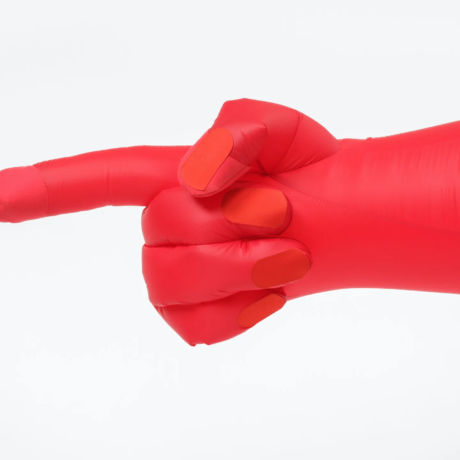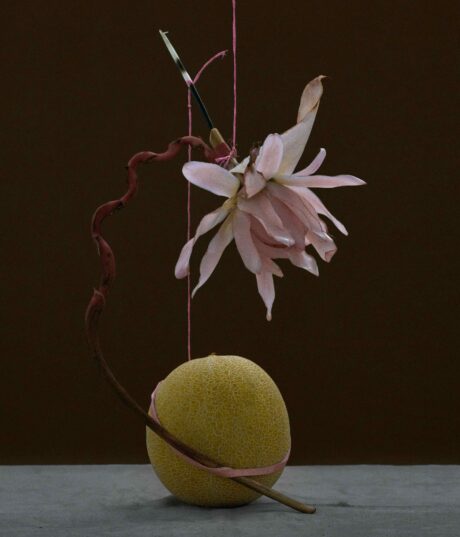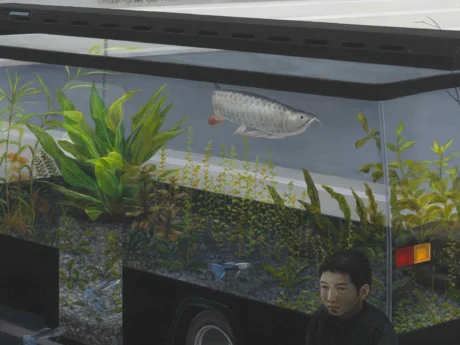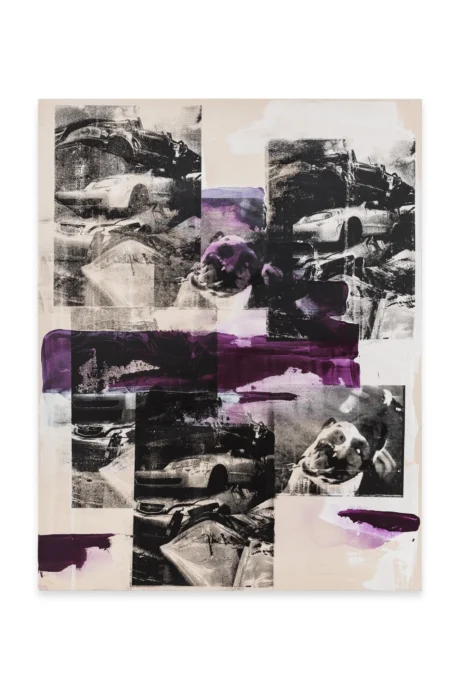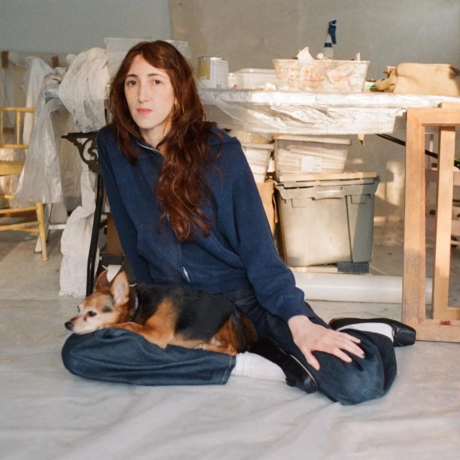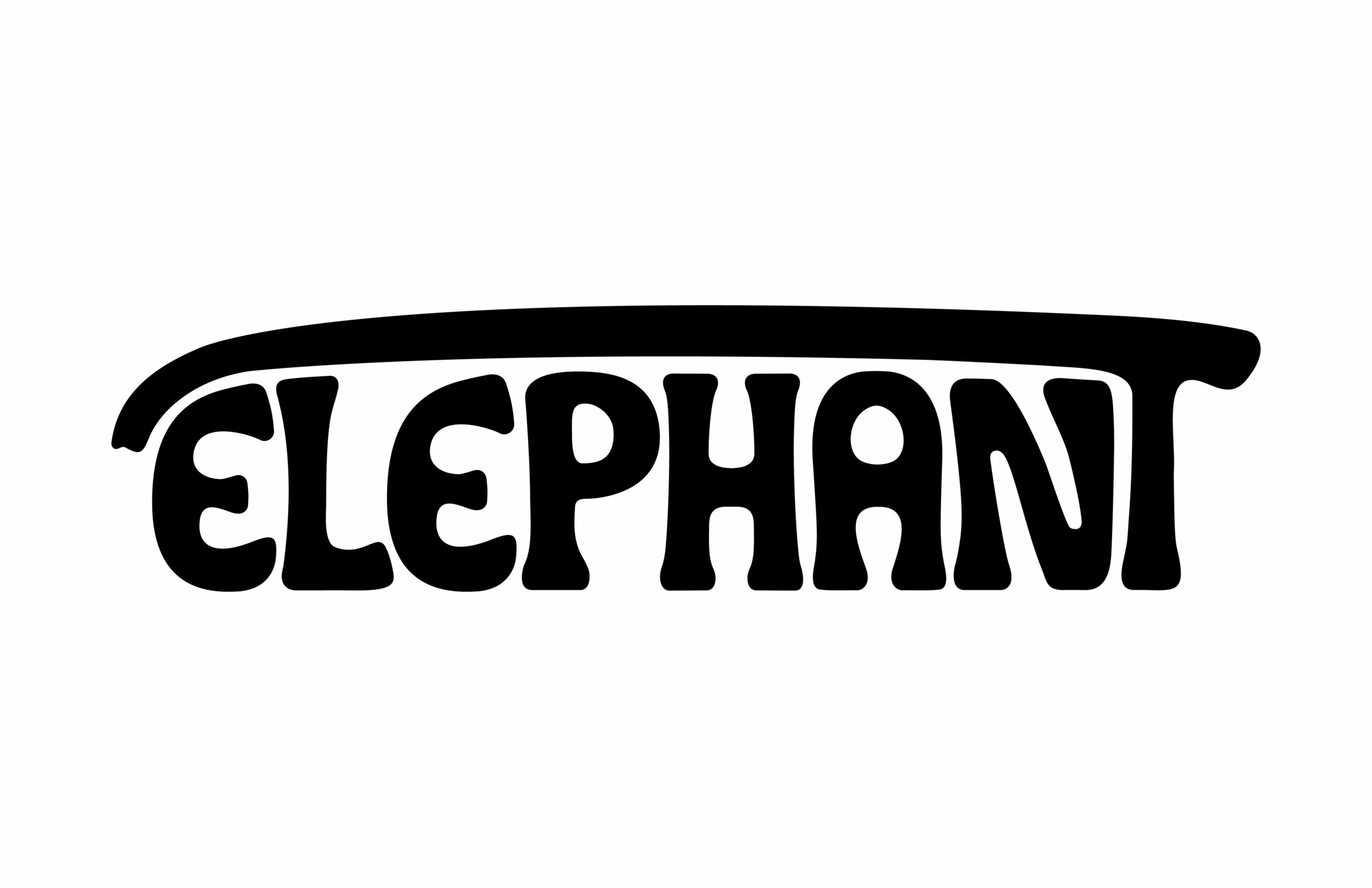Julien Creuzet hasn’t just revisited his Venice Biennale pavilion — he has revitalised it. The artist discusses cultural entanglements, national identity, and the poetry of metamorphosis in his work, where translation, migration, and memory fuse and flow like the tide.
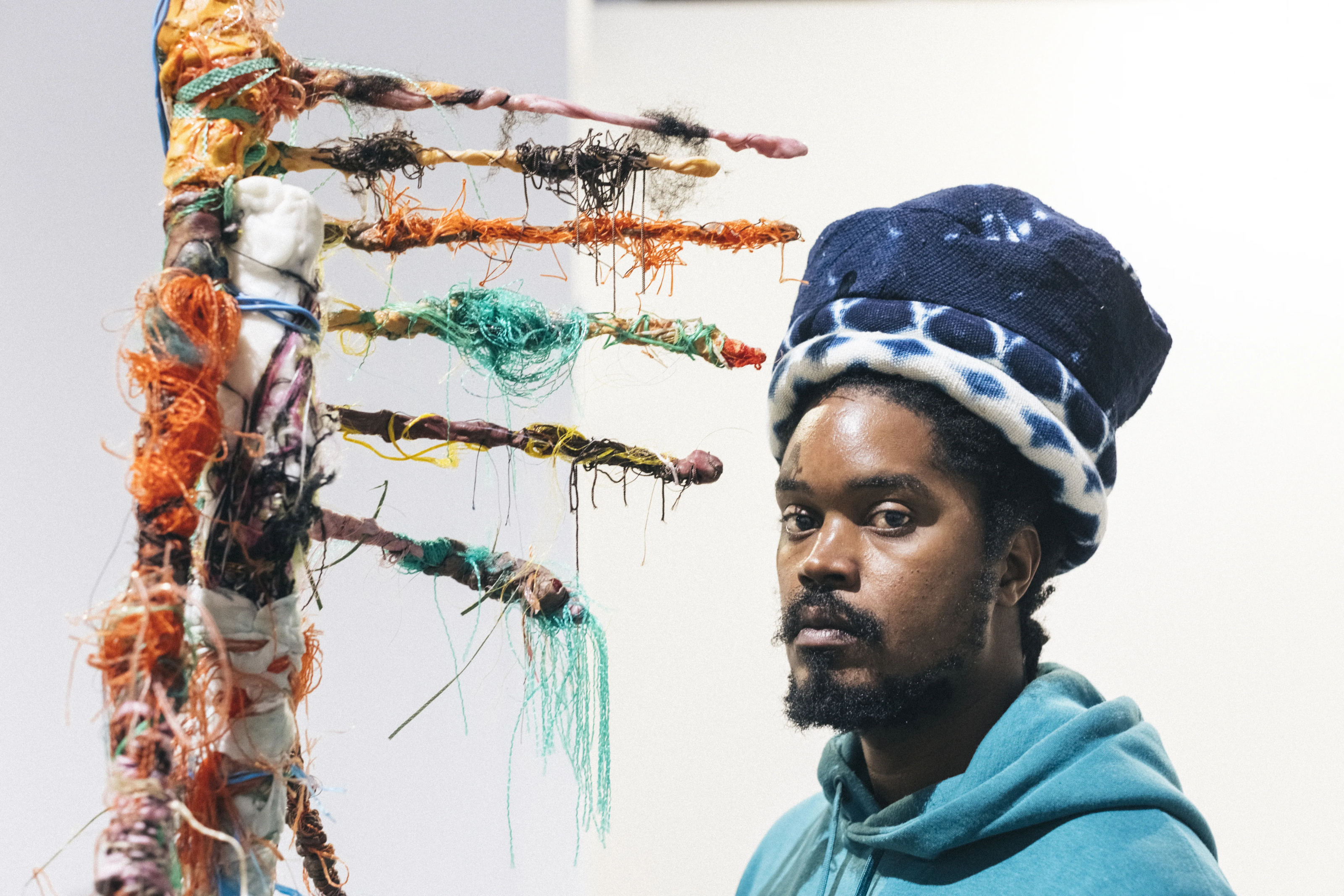
Two themes that perennially haunt discussions of climate change in the art world are its disproportionate impact on the global south and the complicity of the air travel (and air-freight shipping) all but demanded by the unrelenting annual cycle of international biennials and art fairs. It is perhaps only apt that these two concerns coalesce in the work of Julien Creuzet, a visual artist and poet whose works investigate ecocriticism through the wider lens of the Afro-Caribbean diaspora.
In 2024, the Martinique-born Creuzet became the first French-Caribbean artist to represent France at the 60th Venice Biennale. For his first US solo institutional show at The Bell Gallery, Creuzet has re-imagined his audio-visual installation from Venice. Poetically titled Attila cataract your source at the feet of the green peaks will end up in the great sea blue abyss we drowned in the tidal tears of the moon, the installation incorporates several new and borrowed works alongside its original soundtrack and video, including six new floor sculptures in Corten steel — pieces that were fabricated in Providence as a way to reduce the carbon footprint of shipping works across the Atlantic.
Writer and art historian J. Cabelle Ahn spoke with the artist about the revised and evolved rendition of his Venice Biennale pavilion, the complicated entanglements of the French-Caribbean cultural landscape, and metamorphosis.
This interview was conducted in French and has been translated, edited, and condensed for clarity by Ahn.
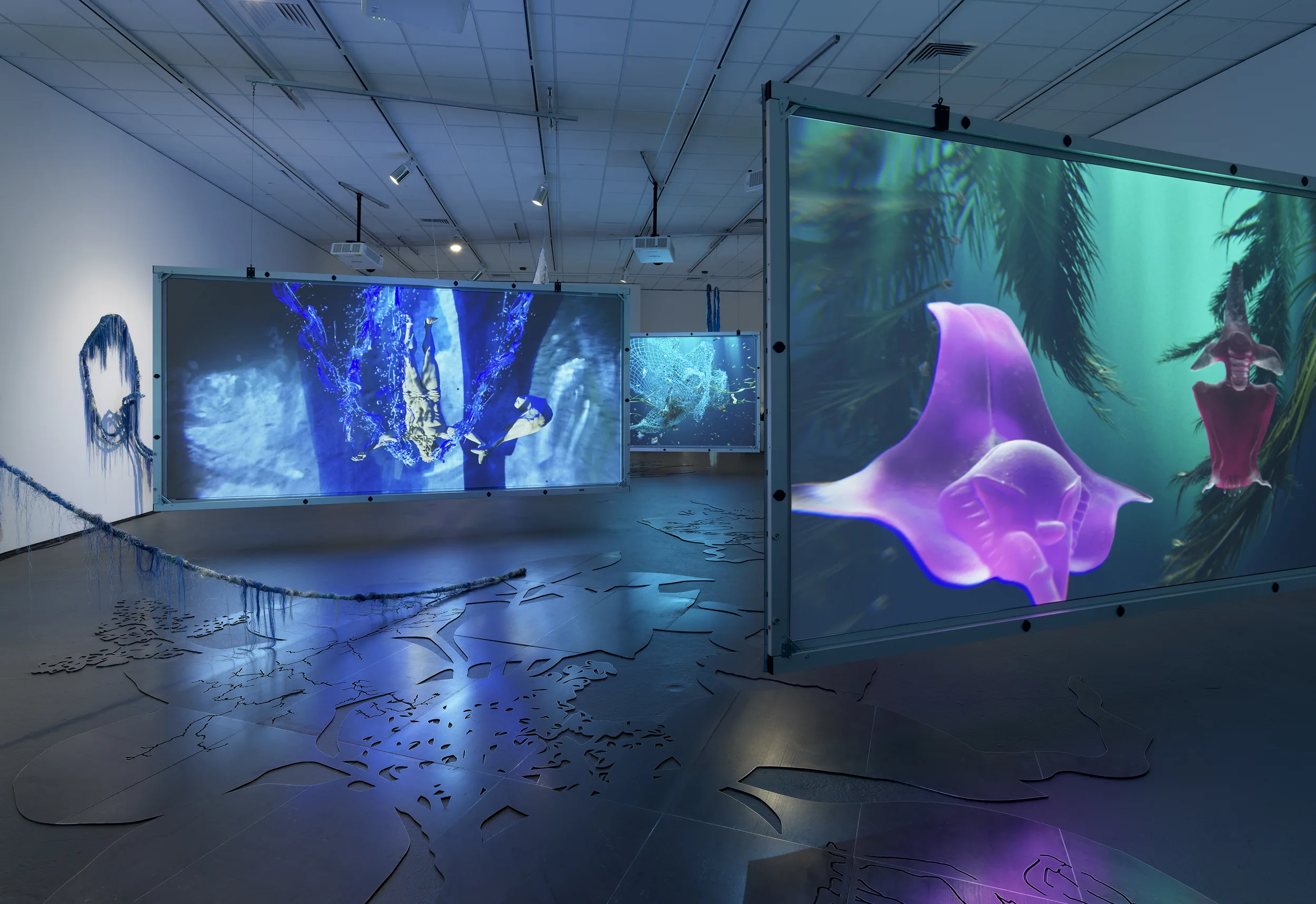
JCA: Let’s start with the catalogue for your exhibition at the French pavilion in the 60th Venice Biennale. The book is akin to an Afro-Caribbean literary encyclopaedia, and features texts translated — often for the first time — into French, Portuguese, English, and Spanish. The concept of translation seems central in your work. Do you think restaging the French pavilion in Providence operates as a type of translation?
JC: We didn’t want a classic catalogue that was only about the exhibition. We wanted the text to be like a “reader” that could be used in universities and facilitate research. We also wanted it to convey the feeling that there are shared imaginations around fresh and salt water, seas and rivers, and that they have their own geographically dependent specificities. The catalogue has its own autonomy, its own function — it allows the people who didn’t have the opportunity to go to Venice or experience the exhibition in one way or another to access the content and the imagination of the French pavilion.
JCA: In an earlier interview with Anaël Pigeat for Projets Média, you mentioned the impact of Ovid on your work and cited, “I find this notion of metamorphosis almost essential.” How does metamorphosis operate in your installation?
JC: I think that it’s a question of art, transformation, and metamorphosing reality into representations, from frescoes of handprints to capturing animals in movement. Above all, it’s about how humanity leaves traces.
This concept of metamorphosis is a fundamental question. Ovid offers insight into this through his poetry, but he ends up banished from the Roman Empire and is sent to the barbarian lands. So, Ovid is only able to write about metamorphosis when he is sent away from Roman Imperial civilisation. This concept of the barbarian — the unwanted other — manifests as the character of Attila for the French pavilion; Attila is not just a barbarian but becomes polyphonic. For example, in Martinique, Attila becomes a source of water. Attila then becomes a name, and so on and so forth. Through this we can show how stories can still impact us today.
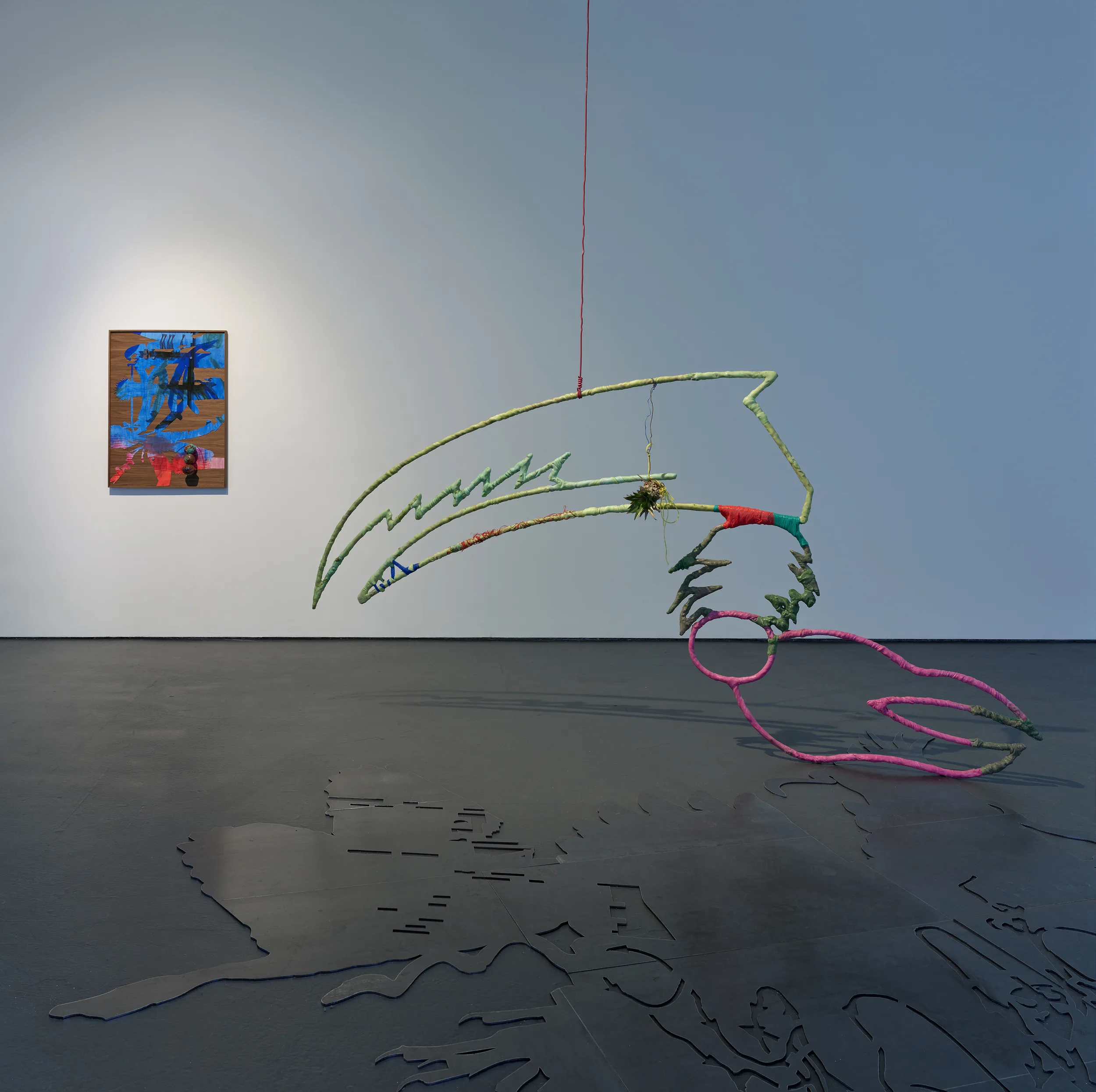
JCA: Some of the new paintings in the installation have wooden supports. I’m reminded of how art history intersects with the French exploitation of their Caribbean colonies. For instance, I believe some eighteenth-century royal furniture was made of tropical hardwoods. What does the incorporation of wood signal in your work?
JC: I really like your interpretation. There is indeed a history there. The king’s furniture is made of mahogany from Cuba, or from manchineel, which is a very dangerous tree. Mahogany is a vernacular word that means everything and nothing. For example, mahogany could be blue mahoe, saman, kapok, or a whole bunch of species endemic to the Caribbean or Central America.
What’s interesting is that the king’s furniture from the eighteenth century isn’t entirely made with wood — it’s veneered. This means that they covered its surface with a thin exotic layer of wood, as if this exoticism was a testimony to wealth. I took this exotic wood and, on it, depicted leaves that appear to be from the banana tree family. The red and blue [on the work] reference Petrochem, a pesticide that has been used for a long time, polluting the soil and causing thousands of people to fall ill with cancer. And the citruses are like growths, like a cancerous area that materialises. I find it interesting to place an ambiguity between a moment of beauty and a moment of tension.
JCA: What about architectural and symbolic tension? Staging an exhibition here, in the white cube of The Bell Gallery, is very different from the interior of the French pavilion in Venice, both in terms of architecture and the act of representing a nation.
JC: What’s interesting is that I represented France nationally, but what does national even mean? There are particularities within the term: I grew up in Martinique, eight thousand kilometres from France, and I personally define myself as a French-Caribbean Afro-descendant. This sentence is a resumé of all my particularities.
When we staged the French pavilion with Céline Kopp and Cindy Sissokho, we held the press conference in Martinique, where many of the journalists and curators had never been. Through this, we sought to decentralize Paris. Also, the press conference was held not in a museum or institution but in Édouard Glissant’s house — we felt that it would be a place of strong poetic and philosophical resonance. You might think that national representation is a confinement, but I feel that I’m living with all my particularities that make me up in the French flag.
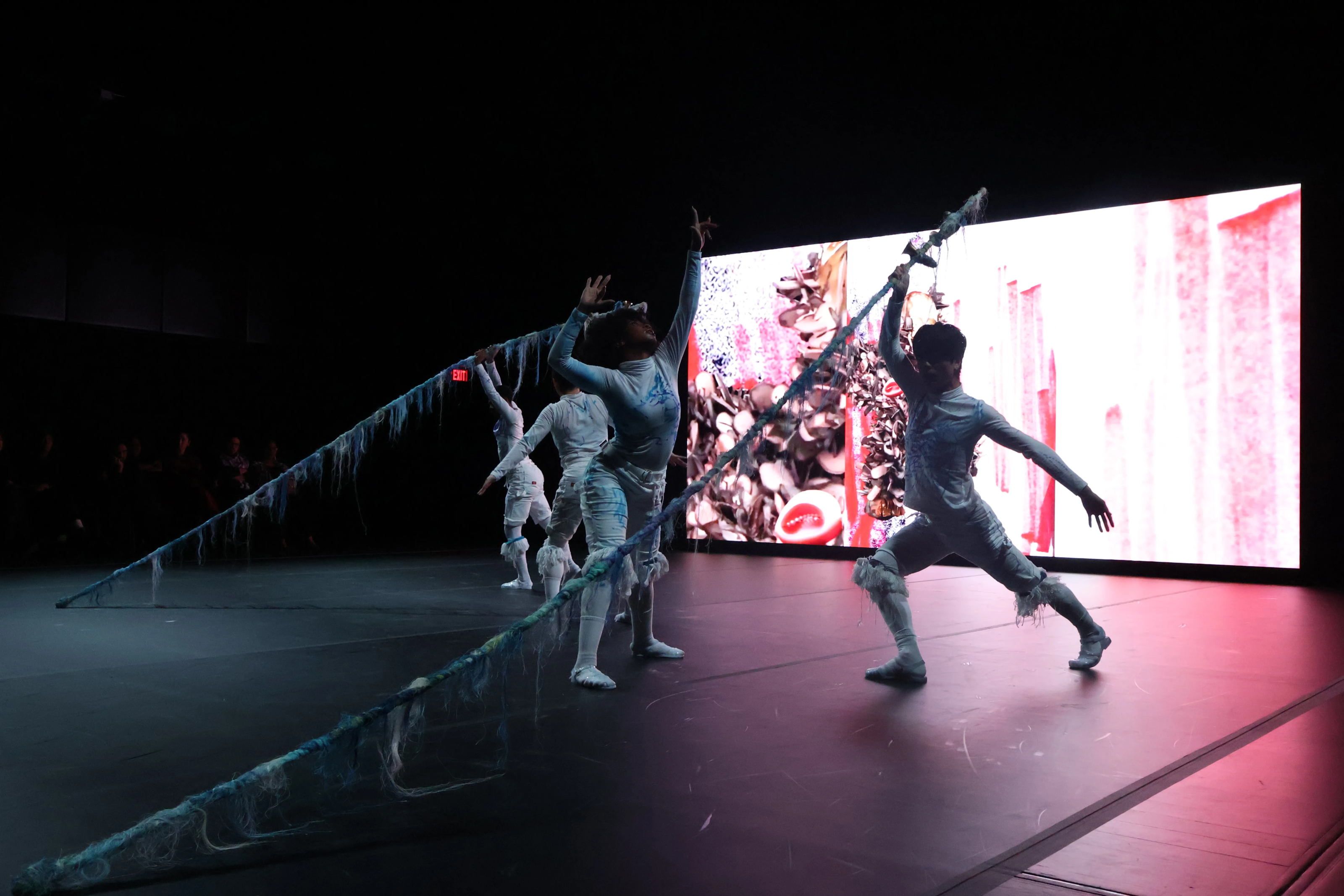
JCA: Water and the aquatic imaginary are important themes in your work, but I want to conversely talk about soil and terroir. The long poles on view were used as props in a performance in Dakar and still have traces of soil on them. What does it mean, to incorporate soil and the earth into a seemingly aquatic installation?
JC: Aquatic doesn’t have to just specify navigation. It can also symbolise movement. For example, we know that a coconut seed can travel thousands and thousands of miles across the water before taking root in the ground, which I find beautiful. The ocean can be a metaphor of migration and history.
JCA: Scholars of Black contemporary art like Nikki Greene, or writers such as Ralph Ellison, have cited music and rhythm as essential to understanding the wider potency of Black art and African diasporic expression. Can you speak about the role of music in your work?
JC: They function as part of an ecosystem. We use the total complexity of our bodies when we listen, when we feel, when we see, when we wander about. It’s also a way of sharing poetry in a different way. I consider poetry to be a work of art in its own right. For me, a poem has the same status as a painting or a sculpture. For example, the title of the exhibition can be sung — it can become a work in itself that you can carry with you and re-read today, or tomorrow morning, and together it creates all types of movement. That’s what we’re experiencing today. For me, poetry is a physical form.
JCA: I’d love to wrap up by talking about Martinique, which is part of a vast French imperial geography. In an interview with Cédric Fauq for Frieze Magazine, you questioned whether Martinique should look to France culturally and artistically, or whether it should look to the English- and Spanish-speaking Caribbean. How do you see this question now? Is it a one-way discourse or, perhaps, a round trip?

JC: The question of imperialism is something that needs to be questioned. I’m no longer sure that we’re in an imperial relationship, and I wonder if it can simply be called a colonial relationship. Today, Martinique is a very complex place, with specific political players and social protests that move, migrate, make noise, and make things happen eight thousand kilometres away.
What’s interesting about Martinique and the wider Caribbean is that, in fact, it’s a crossroad. The Hispanophone and the Anglophone islands are very nearby. We’re close to Venezuela. We’re close to Miami, Mexico, Colombia, French Guiana, and Suriname, and it all creates a very complex movement among these islands. There have been European migrations, but also African, Indian, Chinese, and Taino migrations. We have to take into account that the area has a great deal of cultural complexity in terms of language, culture, customs, cuisine, and soil sedimentation. So, what can Europe judge given its history, its way of thinking and the way it works?
In terms of representation, we can sense that this worldwide political moment of friction, struggle and opposition is also occuring in Martinique. It becomes a question about dialogue, about openness and listening. Maybe sometimes it’s easier for a Spanish speaker from Cuba or Puerto Rico to talk to a Spanish speaker from Mexico or Colombia, and so on. They themselves may have closer ties to a Native Canadian, because traces of native populations still exist throughout the Caribbean. Together, this creates the possibility that Martinique holds power in this space. Quite simply, knowing myself means knowing how I am connected to the world.
Julien Creuzet: Attila cataract your source at the feet of the green peaks will end up in the great sea blue abyss we drowned in the tidal tears of the moon continues at The Bell Gallery, Brown University, Providence, RI, until 1 June, 2025.
Written by J. Cabelle Ahn.
